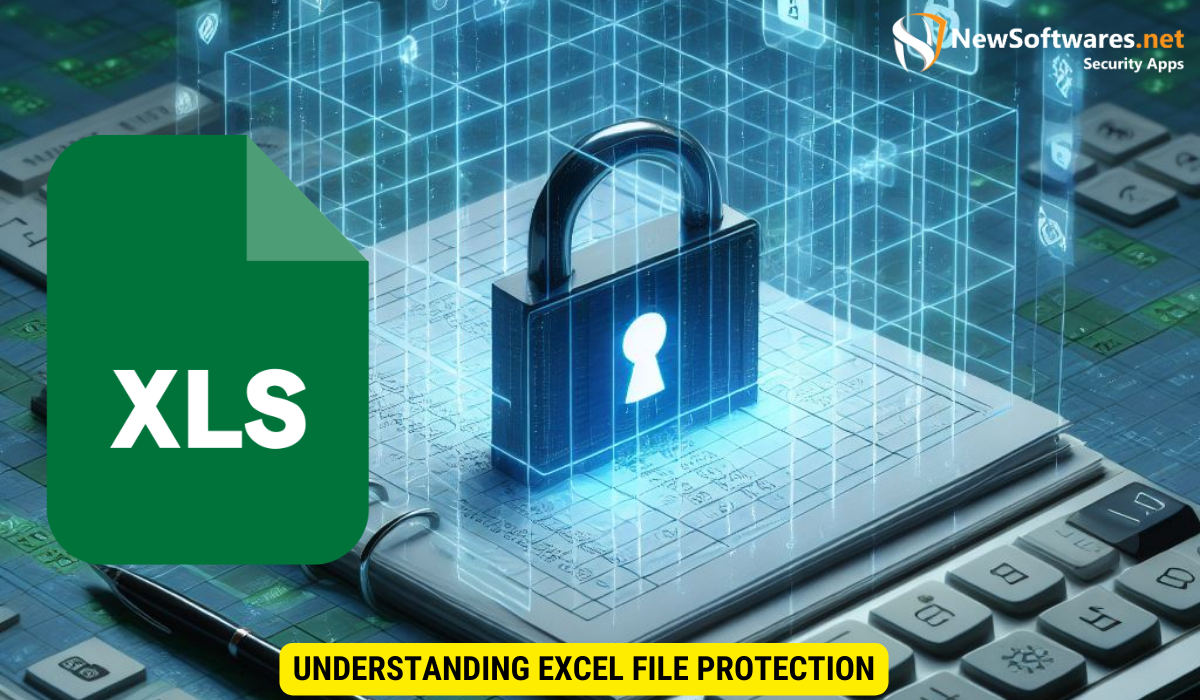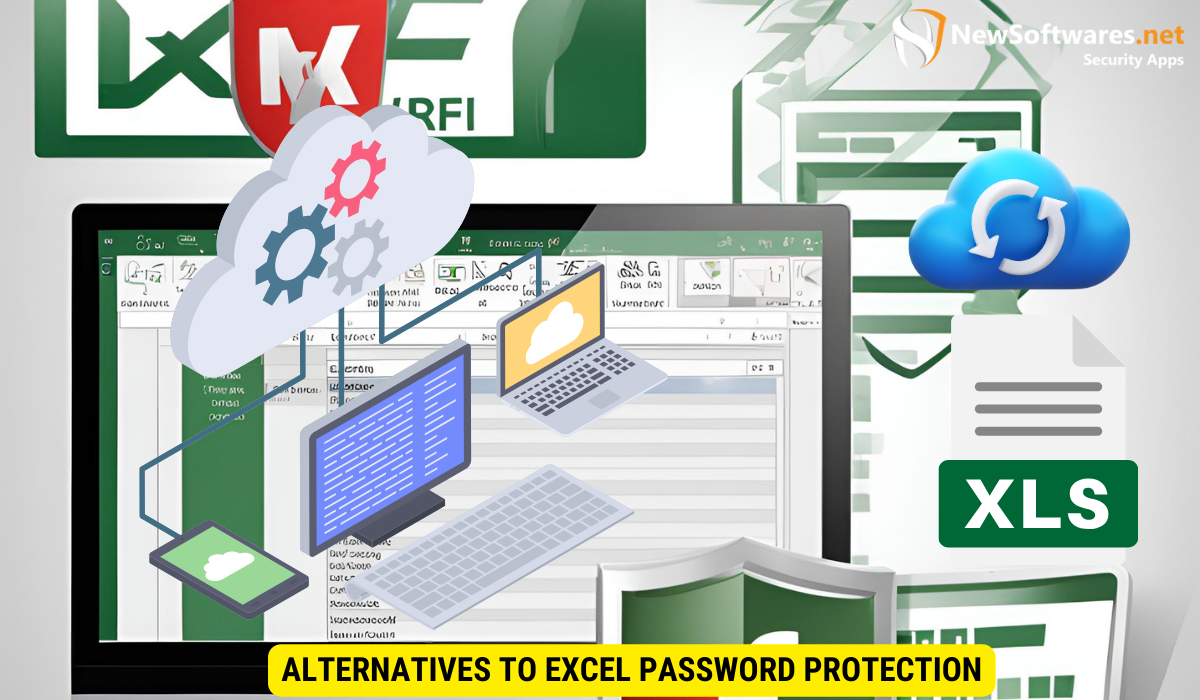Password-protected Excel files offer a level of security by restricting unauthorized access and maintaining data integrity. However, they are not foolproof and can be vulnerable to brute force attacks and the risk of password loss. It is recommended to explore alternative methods such as using secure cloud storage services and implementing two-factor authentication to enhance the security of your Excel files.
Passwords provide a layer of security for Excel files, but are they enough to keep your data safe? I will explore the various aspects of password-protected Excel files to determine their level of security and identify potential weaknesses. I will also discuss alternative methods to enhance the security of your Excel files and provide best practices for creating strong passwords.
Understanding Excel File Protection

Before delving into the security aspects of password-protected Excel files, it is important to have a basic understanding of how Excel file protection works. When you password-protect an Excel file, you are essentially restricting access to it. This means that only individuals who know the password will be able to open and modify the file.
Excel files are commonly used to store sensitive and confidential information, such as financial data, business plans, and personal records. Protecting these files with passwords and encryption is crucial in preventing unauthorized access and maintaining the confidentiality of the data they contain.
The Basics of Excel Password Protection
Excel password protection involves setting a password to open the file and/or a password to modify it. By setting a password to open the file, you are preventing unauthorized users from even accessing the contents of the file without the correct password. On the other hand, setting a password to modify the file allows users to view the file, but prevents them from making any changes without providing the password.
It is important to choose strong and unique passwords when protecting Excel files to enhance security. A strong password should be a combination of letters, numbers, and special characters, making it difficult for hackers to guess or crack through brute force attacks.
The Role of Encryption in Excel Security
In addition to password protection, Excel also offers the option to encrypt the file. Encryption is a process that converts data into a format that can only be deciphered with a specific key or password. By encrypting your Excel file, you add an extra layer of security, as even if someone manages to access the file, they won’t be able to read its contents without decrypting it using the correct key or password.
Encryption algorithms used in Excel adhere to industry standards to ensure the confidentiality and integrity of the data. These algorithms scramble the contents of the file in a way that is nearly impossible to decode without the encryption key, providing peace of mind when storing sensitive information in Excel files.
Strengths of Password-Protected Excel Files
While password-protected Excel files have their limitations, they also offer certain strengths in terms of security.
One additional advantage of using password protection for Excel files is the ability to set different levels of access for different users. This feature allows you to control who can view the data, who can edit it, and who can only read it. By customizing access levels, you can ensure that sensitive information is only available to those who need it, while still allowing collaboration among team members.
Protection Against Unauthorized Access
By requiring a password to open an Excel file, you are effectively preventing unauthorized users from accessing its contents. This is particularly useful when dealing with sensitive or confidential data, as it ensures that only authorized individuals with the password can view the information.
Data Integrity and Confidentiality
Password protection also helps maintain the integrity and confidentiality of the data in your Excel file. By restricting modifications to authorized users, you can be confident that the information remains unchanged and trustworthy. This is especially crucial when dealing with financial records or important business data.
Moreover, password-protected Excel files can be encrypted to provide an additional layer of security. Encryption scrambles the data in the file, making it unreadable without the correct password. This added security measure is essential when transmitting sensitive files over insecure networks or storing them in cloud services.
Weaknesses of Password-Protected Excel Files
Despite their strengths, password-protected Excel files are not foolproof and come with their fair share of weaknesses.
It is important to be aware of these vulnerabilities to ensure the security of your data.
Vulnerability to Brute Force Attacks
One of the main weaknesses of password-protected Excel files is their vulnerability to brute force attacks. Brute force attacks involve systematically trying every possible combination of characters until the correct password is discovered. This can be time-consuming, but with enough computing power, determined attackers can eventually crack the password.
To mitigate this risk, it is recommended to use complex and unique passwords that are not easily guessable. Additionally, enabling multi-factor authentication can add an extra layer of security to protect your Excel files from brute force attacks.
The Risk of Password Loss
Another weakness of password-protected Excel files is the risk of password loss. If you forget or lose the password, you may be locked out of your own file. This can be a major problem, especially if you have important data stored in the file and no backup available.
To prevent the risk of password loss, consider using a reputable password manager to securely store and manage your passwords. Regularly backing up your Excel files and keeping a record of your passwords in a secure location can also help prevent data loss due to forgotten passwords.
Alternatives to Excel Password Protection

If you are concerned about the security weaknesses of password-protected Excel files, there are alternative methods you can consider.
Using Secure Cloud Storage Services
Storing your Excel files in secure cloud storage services can provide an additional layer of security. These services often offer robust encryption and multi-factor authentication, making it harder for unauthorized individuals to access your files.
One popular option for secure cloud storage is Dropbox. Dropbox uses advanced encryption methods to protect your files, both in transit and at rest. Additionally, Dropbox offers features like file versioning and remote wipe, giving you more control over your data security.
Implementing Two-Factor Authentication
Implementing two-factor authentication adds an extra layer of security to your Excel files. With two-factor authentication, you not only need a password to access the file but also a second form of verification, such as a unique code sent to your mobile device.
Google Drive is another platform that supports two-factor authentication. By enabling this feature, you can ensure that even if your password is compromised, unauthorized users will still need a second form of verification to access your Excel files stored on Google Drive.
Enhancing Excel File Security
In addition to considering alternative methods, there are steps you can take to enhance the security of your password-protected Excel files.
Best Practices for Creating Strong Passwords
Creating strong passwords is crucial for protecting your Excel files. Use a combination of uppercase and lowercase letters, numbers, and special characters. Avoid using easily guessable passwords such as birthdates or common words.
Regularly Updating and Changing Passwords
Regularly updating and changing passwords is another effective way to enhance security. By changing passwords periodically, you minimize the risk of someone gaining unauthorized access to your Excel files.
Key Takeaways
- Password-protected Excel files restrict unauthorized access and maintain data integrity.
- Password-protected files are vulnerable to brute force attacks and password loss.
- Alternative methods such as secure cloud storage and two-factor authentication can enhance file security.
- Creating strong passwords and regularly updating them is crucial for better security.
- Consider implementing multiple layers of protection to safeguard your important Excel files.
FAQs
Q: Can Excel password-protected files be hacked?
A: Although Excel password-protected files can be vulnerable to brute force attacks, using strong passwords and additional security measures can significantly reduce the risk of hacking.
Q: What should I do if I forget the password to my Excel file?
A: If you forget the password to your Excel file, you have limited options. One option is to try using password recovery software designed specifically for Excel files. Alternatively, you may need to recreate the file from scratch or retrieve it from a backup if available.
Q: Are password-protected Excel files safe for sharing sensitive information?
A: While password-protected Excel files can provide some level of security, they should not be solely relied upon for sharing sensitive information. Instead, consider using secure file-sharing methods that offer encryption and user access controls.
Q: How often should I update my Excel file passwords?
A: It is recommended to update your Excel file passwords periodically, ideally every few months or whenever there is a significant change in personnel who have access to the file.
Q: Can I use the same password for multiple Excel files?
A: It is not advisable to use the same password for multiple Excel files or any other accounts. Using unique passwords for each file significantly reduces the risk of unauthorized access if one password is compromised.
Conclusion
While password protection adds a layer of security to Excel files, it is important to be aware of its limitations. Understanding the strengths and weaknesses of password-protected Excel files is essential in making informed decisions about data security. By exploring alternative methods, implementing best practices, and staying vigilant, you can better protect your valuable information and mitigate potential risks.
